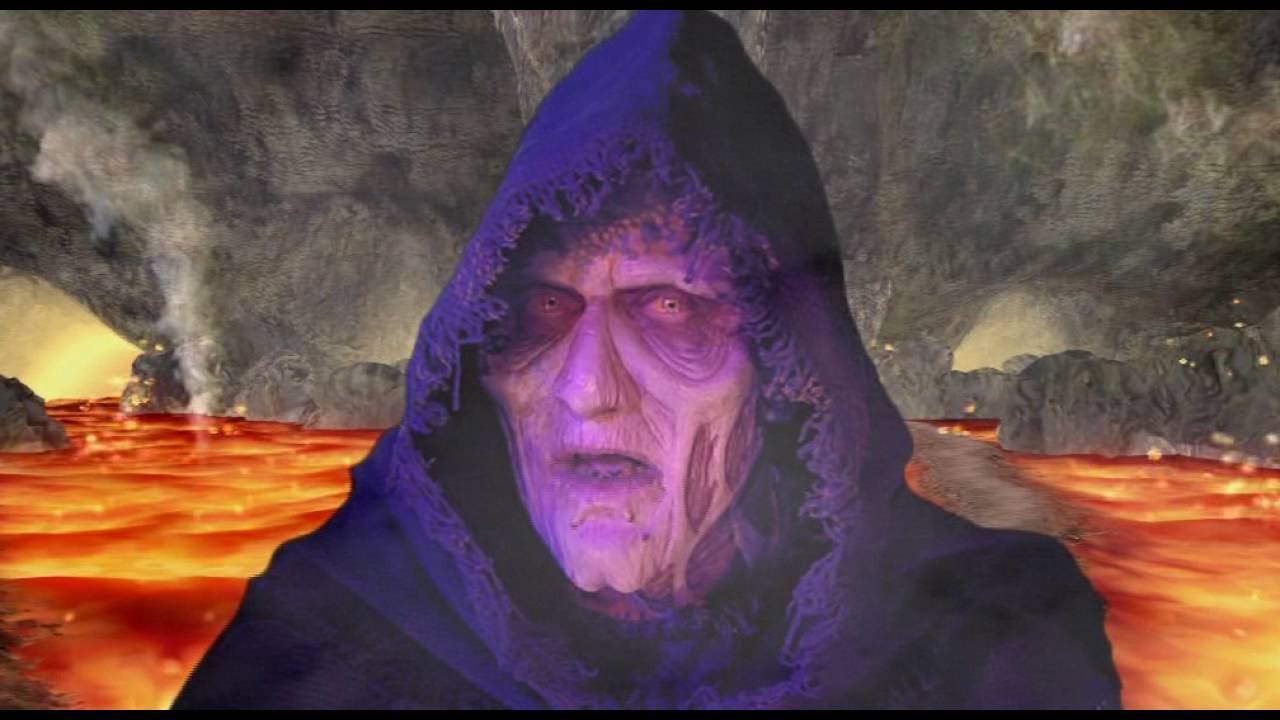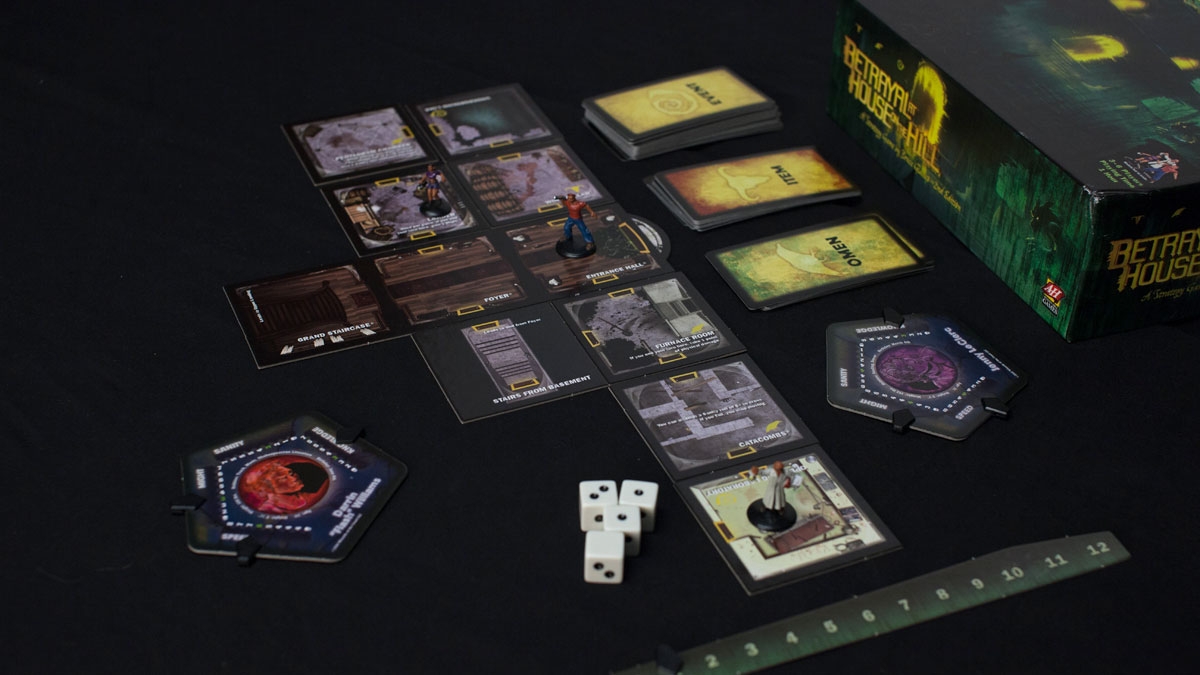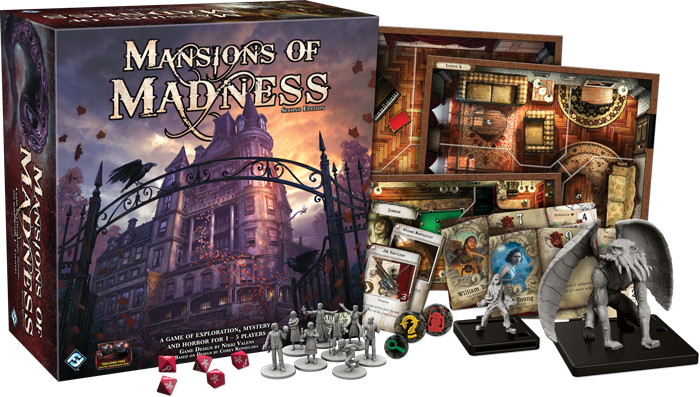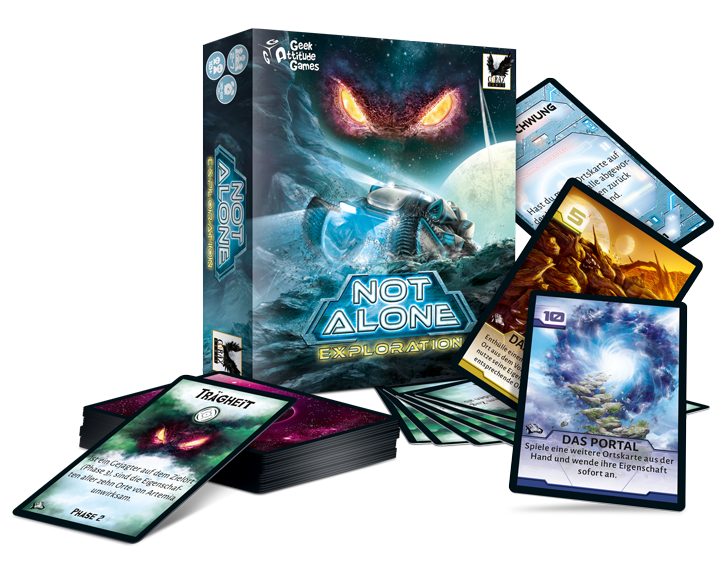Can board games be scary?
Using digital and physical tricks, here's how board game designers try to spook you in your own house.

In the 1990’s, two Australian designers released an interactive ‘movie’ board game called Atmosfear. In the game, players must move and collect keys, all while being routinely chastised and insulted by the titular ‘Gatekeeper’. This Gatekeeper character was originally brought to life via that now ancient media format, the VHS tape. The video was specifically designed to be watched alongside the game, and ended after exactly an hour, setting a strict time limit for players to successfully complete their tasks and win.
The actual idea behind the Atmosfear series is quite unique, and probably helped contribute to its enduring popularity. However, with the extremely hammy (if not passionate) performance by the Gatekeeper, alongside a script that wouldn’t seem out of place in a Tales from the Crypt episode, no one could ever take Atmosfear that seriously.
So, can horror board games ever really be scary? Or are they doomed to be, like Atmosfear, a novelty at best? Let’s look at some examples...

Betrayal at House on The Hill is a modern classic that mixes traditional RPG storytelling with adventure gameplay. players explore a haunted mansion, finding items and encountering various horrors, until one or more players turn traitor and attempt to enact their nefarious plans. Betrayal is a homage to the legacy of Hammer Horror, with a catalogue of trope-heavy scenarios for players to encounter; including ancient mummies, witches, giant rats, and demons. It’s the kind of game for anyone with a interest in horror as a genre, as it’s creators are clearly afishinados in those classic stories and myths that have become so iconic.
However, it’s this lack of originality that really limits Betrayal's ability to actually scare. It’s certainly engaging horror, but more in a fun and kooky ghost train kind of way. Whether you’ll even be slightly affected by Betrayal, often depends on which scenario you end up playing. Seeing as the method for selecting a scenario is almost entirely random, you might end up with the one about the giant blob monster, which is certainly charming, but probably not frightening (unless you’re scared of jelly). The quality of the writing really improves with the game’s expansion, Widow’s Walk, which has some genuinely unique stories with mechanics you might not have seen before. But the overall tone generally hovers more around Goosebumps than Alien.
Which is not to say that Betrayal has no worth as a piece of horror media. It’s a game I’m always recommending, because it’s a great entry point for anyone looking to get into tabletop RPGs set in horror universes. The game’s limitations are both its greatest strength and weakness, as it restricts its ability to actually scare players, but makes it much more accessible and quicker to play. Betrayal invokes curiosity in its players, especially the desire to experience its other scenarios. The silly little stories on the cards might not scare you, but they could awaken an interest to explore more original horror RPGs in the future.

Mansions of Madness is a roleplaying/adventure game set in the expansive Lovecraftian universe of Eldritch Horror (which is itself, a spin-off of Arkham Horror). Like Betrayal, players must explore a location, seeking items and surviving monsters, until the grand finale, wherein they must face some great and terrible threat and win (or die). HP Lovecraft is all the rage in the tabletop community at the moment, with new games based on his novels popping up like Gremlins on Christmas Eve, so games like Mansions of Madness can seem a little unoriginal. On the one hand, having a healthy knowledge of Lovecraftian horror might help you to understand the enormity of the threats you face, but on the other, it also might leave you desensitised to the horror thanks to oversaturation. It goes to show, that a lot of horror’s effectiveness hinges on the experiences of the players themselves.
The biggest gaming news, reviews and hardware deals
Keep up to date with the most important stories and the best deals, as picked by the PC Gamer team.
But what makes Mansions of Madness a great game, is how accessible it is to newer players. The story campaigns are already set-up for you, with a selection of scenarios made available to choose from the very outset, each offering a different setting, threat, and difficulty. This gives players enough customisation to play the kind of horror experience they want, without overwhelming them with options. This doesn’t necessarily make Mansions of Madness very scary, it’s more nail-bitingly tense than anything else, but it does provide players with a relatively short and approachable horror RPG-like experience. Especially considering that the second version of the game also came with an app, that takes the monotony of moving monster pieces and setting up the board away from players.
Mansions of Madness is even successful enough to warrant an upcoming digital adaptation on PC, entitled Mansions of Madness: Mother’s Embrace. The videogame is being developed by Asmodee, the same people behind the adaptation of another atmospheric game: Mysterium. So it’s quite possible that MM could really nail its horror with the right use of immersive graphics, audio, and gameplay.

Not Alone, a competitive/co-operative card game based on the 1924 classic short-story The Deadliest Game (think Predator but with a Russian general), also offers a simplified horror experience, but more through its mechanics than its presentation. In Not Alone, one player assumes the role of the alien hunter, and the others become their victims. The victims must hide from the alien long enough to eventually escape the planet, whilst the alien must find their prey and end their resistance. Ghislain Masson, lead designer on the game, described Not Alone as being an elaborate version of hide and seek: ‘It’s simple, we’ve all played hide and seek as kids, so the game capitalises on a universal experience of tension.’
Unlike Betrayal and MM, there are no story or adventure elements in Not Alone, only the struggle between the almighty alien presence, and the planetary explorers. Which means that a lot of the game’s horror relies on whether the player in the role of the alien is actually any good. Luckily for me, I first played Not Alone as a victim to a friend who knew far more about the game than I did. It also helps that the game’s mechanics are designed to emphasise the vulnerability of the victims, with no opportunities for combat, and everything riding on how convincingly they can bluff about their whereabouts. Ghislain highlighted how unusual this approach to gameplay is:‘In most games having the chance to talk as a team is usually an advantage. But with Not Alone, players must learn how to work individually within their team. It’s very isolating.’
Which certainly makes Not Alone interesting, but not terribly frightening, because the meat of the game is still in picking up cards and deciding what to do with them. It’s certainly a fun and dynamic system, but it’s not immersive enough to scare. Ghislain himself admitted that he was doubtful as to whether any board game can ever really be scary: ‘I just think that having people there with you, as a social group, makes all those risks feel inconsequential. I don’t think it’s impossible, just incredibly hard.’
Earlier today I visited my local comic book/board game shop to pick up the latest edition of Oblivion Song (it’s a very good series). Whilst in there, I posed the question of whether board games could ever be scary to the store clerk, and we came to exactly the same conclusion. That much of it is dependent on the people playing, but overall, board games are just too limited to be scary. If you play them in the right circumstances, maybe in a dark room lit by candle light with some suitable music playing, then you might feel a tad spooked. But because they almost all revolve around linear and predictable mechanics, it’s very difficult to see them as anything other than a game with friends. For a true horror tabletop experience, both he, and I, recommend trying out one of the many fantastic pen & paper RPG’s out there. Whether it’s Call of Cthulhu or Dread, horror is all about immersion, and nothing is better at immersion than the imagination and a good story-teller.

